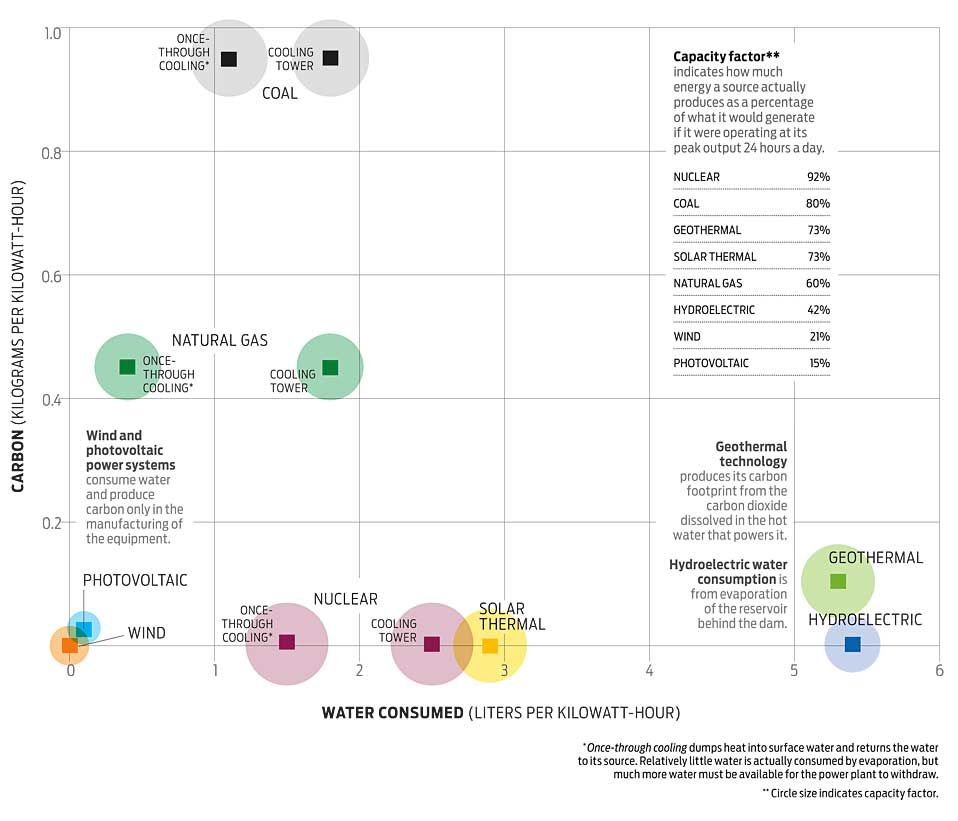It’s not enough to reduce carbon dioxide emissions from energy production, according to a 2009 report by market research firm Lux Research, in Boston. You have to worry about water too. The company plotted the carbon intensity (in kilograms per kilowatt-hour) and the water intensity (in liters per kilowatt-hour) of typical ”green” and ”dirty” sources of energy to illustrate how tightly bound carbon and water are. Fortunately, certain technologies could let us break the link.
As you might expect, solar photovoltaic and wind power produce the least carbon and consume the least water, even if you take into account the water used in manufacturing the equipment. But they are intermittent sources that can’t be depended on 24-7. Nuclear power doesn’t have that problem, but it’s a much thirstier way to make electricity. In short, there are no perfect solutions.
Improving efficiency can reduce both carbon output and water consumption, and indeed there are technologies available now that can blunt a power plant’s water needs, according to the analysis. But Lux senior analyst Michael LoCascio has a more radical suggestion: Restructure the power grid. Loss-limiting, long-distance, high-voltage DC lines could transmit water- and carbon-free solar photovoltaic power from sunny-but-dry deserts. They could also let us build those thirsty nuclear power plants on the coasts, where they would drink only abundant ocean water.
The trouble is that alternate low-water and low-carbon technologies cost money, whereas both water and carbon are, in most places, still quite cheap. Real change to our energy mix will require a recognition of their real costs.
This article originally appeared in print as "Carbonated Water."
Samuel K. Moore is the senior editor at IEEE Spectrum in charge of semiconductors coverage. An IEEE member, he has a bachelor's degree in biomedical engineering from Brown University and a master's degree in journalism from New York University.
